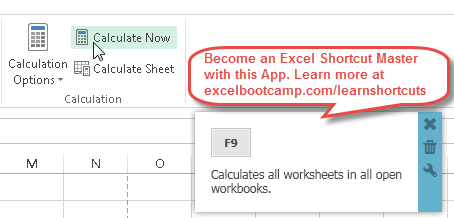

The substitutions let you perform the same actions you can do in Windows. The solution is to use specific substitutions, as shown in the table below. This is a problem, because many of these keys are used in Excel shortcuts. Unless you're using an extended keyboard, keys like Home, End, backspace, Page up, and Page down are nowhere to be found. Missing keysĪnother difference that may trip you up on a Mac is certain keys are missing. Personally, I like using the function keys to control the computer, so I leave this setting alone, and just the fn key when needed in Excel. In essence, this setting reverses behavior so that you need to use fn to control the Mac. If you do this, however, note that you won't be able to use function keys for things like Brightness, Volume, etc. Here you can check a box that will that will change function key behavior to work like "standard function keys". If you really hate using the fn key, you can change this behavior by changing a preference at System Preferences > Keyboard.

You'll find the fn key in the lower left on your keyboard. To make function keys work like you expect in Excel, you need to add a key: the function or fn key. Why?īy default, Function keys on a Mac control the computer itself, things like screen brightness, volume, video pause and play, and so on. This means that if press only the function keys in Excel, you'll end up controlling the Mac, and not Excel. For example, you can use F1 for help, F7 for spelling, and shift + F3 to insert a function. But if you try these shortcuts directly on a Mac, they don't work. Standard Mac keyboard with 12 function keysĪs you know, function keys are uses for many shortcuts in Excel. These keys sit at the top of the keyboard and are labeled F1 to F12 on standard keyboards and F13, F14 and higher on extended keyboards.
#Refresh mac hotkey windows
Like their counterparts in the Windows world, Mac keyboards have function keys. The table below shows some example shortcuts with a translation. You'll see these symbols in menus across all applications, so they're not specific to Excel. There really aren't too many symbols, so I recommend that you bite the bullet and memorize them. The Mac Finder – abbreviations appear in all applications, not just Excel For example, the Command key is abbreviated as ⌘, the Control key with ⌃, and the option key as ⌥. These symbols have a long history on the Mac, and you'll find them in menus everywhere.


One of more confusing aspects of keyboard shortcuts on the Mac are the symbols you'll see for certain keys. Click on it to finally refresh your PC.Also see: Excel shortcuts on the Mac // 3 minute video 1. If you don’t see an option of Refresh, click on Show more options at the bottom. Go to Windows desktop and right-click anywhere on the screen, as long as it's not on an icon. And as it turns out, it can even help you refresh your copy of Windows 11. The context menu is a trustworthy tool for any Windows user-it's the little menu that pops up when you right-click on something.
#Refresh mac hotkey how to
How to Refresh Windows 11 Via the Context Menu One such practice popular among the regular Windows users is that of hitting the refresh button.īut did you know there’s more than one way to approach a refresh in a Windows PC? In this article, we've taken care of just that for you, and have covered the best methods to refresh your Windows 11.
#Refresh mac hotkey Pc
If you’ve been a Windows user for a while, you must’ve picked up some of the best practices of using a PC along the way.


 0 kommentar(er)
0 kommentar(er)
